
As of 2023, the Indian Air Force (IAF) has a combined strength of 31 squadrons. A total of six Mig-21 Bison squadrons will be retired by 2025. With the addition of three Sukhoi30MKI squadrons and two LCA-Tejas Mark-1 squadrons this year, the IAF will somehow be able to make up its strength for the retiring jets and maintain up to 32 combat jet squadrons. An additional squadron of Jaguar deep penetration strike aircraft will also retire by 2027, thus bringing down the combined strength to 31 squadrons. So, there will be a total shortfall of 11 combat squadrons by 2030, if additional fighter jets are not ordered immediately.
Meanwhile, as the deal to procure 114 foreign fighter jets (dubbed MMRCA 2.0) progresses, simultaneous efforts are also being made towards acquisition of indigenous fighter aircraft for filling up the gaps. Technology intensive air power requires faster replacement of assets due to quicker obsolescence. While IAF has a Plan-B to fight with what it has, if forced into conflict, but numbers are clearly not adequate to fully execute an air campaign in a two-front scenario. It is imperative of time that the IAF quickly rebuild the squadron strength and acquire modern fighters that are as good or better than the adversaries. Developing indigenous aircraft is critical for India to become a global power. China has already moved way ahead. The Light Combat AircraftTejas and the Advanced Medium Combat Aircraft (AMCA) are the main two indigenous combat aircraft projects and it is important to continuously monitor their progress.
Concept of fourth and fifth generation jets
Esta historia es de la edición February 2023 de Geopolitics.
Comience su prueba gratuita de Magzter GOLD de 7 días para acceder a miles de historias premium seleccionadas y a más de 9,000 revistas y periódicos.
Ya eres suscriptor ? Conectar
Esta historia es de la edición February 2023 de Geopolitics.
Comience su prueba gratuita de Magzter GOLD de 7 días para acceder a miles de historias premium seleccionadas y a más de 9,000 revistas y periódicos.
Ya eres suscriptor? Conectar
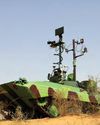
THE RISE OF UGVs REVOLUTIONISING TACTICAL AND STRATEGIC MILITARY OPERATIONS
MANOJ K CHANNAN explains the history of UGVs, their role in modern warfare, their integration with advanced technologies, and their broader implications for military operations, intelligence assessments, and human-machine collaboration

INNOVATIONS AND ADVANCEMENTS IN DEFENCE TECHNOLOGY BY MKU
The defence industry is evolving rapidly to address the dynamic challenges of modern warfare, and MKU is at the forefront of this transformation. In an exclusive interaction, VAIBHAV GUPTA, Director India Business of MKU highlights their innovative approaches, spanning advanced ballistic protection, cutting-edge night vision and thermal imaging technologies, and strategic partnerships to enhance India's defence capabilities. From pioneering protective solutions for soldiers to leveraging indigenous technological breakthroughs, MKU continues to redefine the benchmarks of excellence in defence technology.
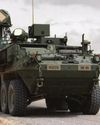
INDIA'S STRYKER CHOICE
India's selection of the US-made Stryker armored vehicle over the indigenous WhAP sparks debates on prioritiSing swift acquisitions and combat readiness versus commitment to self-
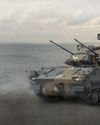
HANWHA AEROSPACE DEEPENS INDIA DEFENSE TIES AMID REGIONAL TECH RACE
Amid growing regional competition in defence technology, a prominent defence initiative is strengthening ties with India through successful artillery and air defence programs. This collaboration aligns with India's strategic focus on bolstering domestic defence manufacturing and reducing reliance on imports. By fostering advanced technology transfer and enhancing local production capabilities, the partnership is poised to transform the defence landscape in Asia, showcasing significant achievements in artillery systems, air defence solutions, and aerospace innovation

ADVANCING INDIA'S DEFENCE CAPABILITIES
Larsen & Toubro (L&T) is advancing India’s defence ecosystem with ground breaking innovations, including next-generation combat platforms, autonomous technologies, and cutting-edge systems, underscoring its commitment to India’s military modernisation, highlights ARUN RAMCHANDANI, SVP & Head – L&T Precision Engineering and Systems IC
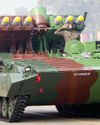
NEED FOR A LARGER ARTILLERY FORCE
At a time when India is increasingly facing a multi-front challenge on her borders, it is quite evident that the Indian artillery modernisation programme needs a massive thrust from the government, argues JYOTI SINGH
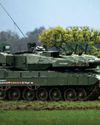
FORCE PROTECTION
The Indian Army faces an urgent need to equip Main Battle Tanks and Armoured Fighting Vehicles with advanced Active Protection Systems to counter modern threats and enhance battlefield survivability. The lack of such systems could be addressed with the combat-proven Trophy APS, writes ATUL CHANDRA
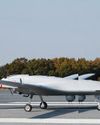
THE INDIAN ARMY AND DRONES
AMIT GUPTA argues why the induction of Drones, which have changed the face of modern warfare, into the Indian Army needs to be in greater numbers

TECHNOLOGICAL SYNERGY REDEFINED: IAI'S COMMITMENT TO INDIA-ISRAEL INNOVATION
BRIG. GEN. (RES) EYTAN ESHEL, Executive Vice President of Technology, Chief Technology Officer (CTO), R&D and Innovation of IAI, highlights how nearly 40 years of India-Israel collaboration has fostered innovation, leveraging India's deep-tech talent for global aerospace and defence advancements while promoting sustainability and co-developing solutions with Indian startups and institutions.

INDIA EMBARKS ON DECADE-LONG PROJECT TO DEVELOP FUTURE-READY COMBAT VEHICLE
With a substantial portion of its borders shared with neighbouring countries, it is essential for India to have modern and robust tanks for both defensive and offensive operations. In this regard, the FRCV's advanced capabilities allow it to face changing ground obstacles like land and air threats. It will provide a decisive advantage in future conflicts and enhance operational effectiveness through its integration with air power, writes JOSEPH P CHACKO